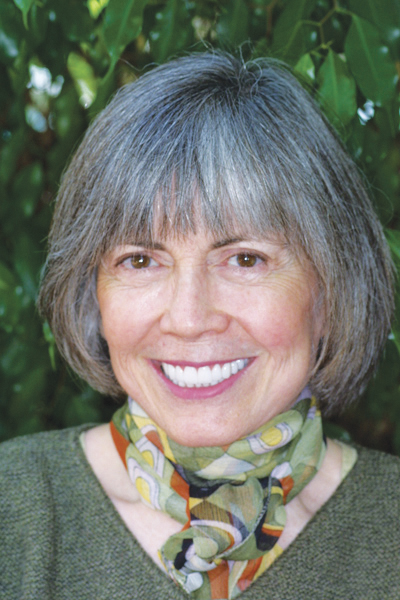Much has been said, written, and sung about this city. Some people become enamored with this place because of its rare and enticing culture that allows them freedoms that they can’t experience anywhere else. Others detest the city because they find it too indulgent and vulgar. One way or another, this 300-year-old city knows how to leave a mark on everyone who sets foot within it. Authors, actors, and artists of all kinds have left a trail of sayings about New Orleans that could fill a book.

Author Anne Rice was born in New Orleans, finally moving out-of-state when she was in her teens. She lived in Texas and then in California through her early adulthood, yet she used New Orleans as the setting for her most famous books, including Interview With a Vampire. After finding success as an author, she bought a home in New Orleans and started spending more time here. She said, “In the spring of 1988, I returned to New Orleans, and as soon as I smelled the air, I knew I was home. It was rich, almost sweet, like the scent of jasmine and roses around our old courtyard. I walked the streets, savoring that long-lost perfume.”
The Greek-Irish writer Lafcadio Hearn is best-known for his writings about Japan, but complicated circumstances took him to New Orleans for 10 years first. Writing for various newspapers in the late 1800s, Hearn was fascinated with opera, Voodoo, and Creole cuisine. He described the city as a “dead bride crowned with orange flowers” and often focused on the glorious decay that he saw all around him. One of his writings includes the quote, “Times are not good here. The city is crumbling into ashes. It has been buried under taxes and frauds and mal-administrations so that it has become a study for archaeologists . . . but it is better to live here in sackcloth and ashes than to own the whole state of Ohio.”

Aleister Crowley, occultist and founder of the religion of Thelema, became obsessed with imbibing absinthe at the Old Absinthe House when he moved in 1917 into an apartment that currently houses The Dragon’s Den. The writer, known for his works about the practice of magic and mysticism, spent hours appreciating the intoxicating qualities of the green liquor. He wrote, “Keep always this dim corner for me, that I may sit while the Green Hour glides, a proud pavine of Time. For I am no longer in the city accursed, where Time is horsed on the white gelding Death, his spurs rusted with blood. There is a corner of the United States which he has overlooked. It lies in New Orleans.”

The award-winning TIME Magazine writer and editor Nancy Gibbs covered many hard-hitting and controversial subjects in her over-30-year career. She wrote a particularly relevant article entitled “Hurricane Katrina: An American Tragedy” about how the U.S. government failed to protect and rebuild the city. The first line of the poetic (and even a bit sentimental) article states, “New Orleans lives by the water and fights it, a sand castle set on a sponge nine feet below sea level, where people made music from heartache, named their drinks for hurricanes and joked that one day you’d be able to tour the city by gondola . . . So as Katrina, wicked and flirtatious, lingered in the Gulf with her eye on the town, many citizens decided they would stay, stubborn or stoic or too poor to have much choice.”
Sherwood Anderson spent most of his life in Ohio, and his large body of novels, short stories, and essays are based there, too. However, when he moved to New Orleans in the 1920s, he was finally able to write his only best-selling book, entitled Dark Laughter. He wrote about the people of New Orleans: “Blessed be these people. They know how to play. They are truly a people of culture . . . putting the joy of living above the much less subtle and . . . altogether more stupid joy of growth and achievement.”

The famed playwright Tennessee Williams is celebrated in New Orleans annually during the Tennessee Williams New Orleans Literary Festival. New Orleans was certainly one of Tennessee’s favorite American cities, which he put on par with New York and San Francisco. He claimed that “everywhere else is Cleveland.” Of the many things that he wrote about the city, he explained why he personally enjoyed it so much, saying, “In New Orleans . . . I found the kind of freedom I had always needed, and the shock of it—against the Puritanism of my nature—has given me a subject, a theme, which I have never ceased exploiting.”

Benjamin Latrobe was the British architectural artist responsible for designing some of the most recognizable buildings in the U.S., including the United States Capitol and the White House as well as the Basilica of the Blessed Virgin Mary, located in Baltimore. He and his son Henry Boneval Latrobe arrived in New Orleans and began several projects in the early 1800s. He foresaw great potential for financial gain in the city, as it was a port city. The father and son duo participated in designing a waterworks system, Charity Hospital, the St. Louis Cathedral, the French Opera House, and more. Tragically, both Benjamin and his son Henry died from yellow fever in 1820 and 1817, respectively. Before his untimely death, Benjamin wrote about the city in which he saw so much potential: “New Orleans has at first sight a very imposing and handsome appearance, beyond any other city in the United States in which I have yet been. Mud, mud, mud. This is a floating city, floating below the surface of the water on a bed of mud.”
Whether or not it is your home or your escape to a corner of the globe outside of time, and whether or not you consider it a blessed place of freedom or a beautiful place of decay, floating on water—New Orleans has moved countless numbers and will continue to inspire awe, desire, and enchantment in those lucky enough to plant their feet on its cobblestone banquettes.

